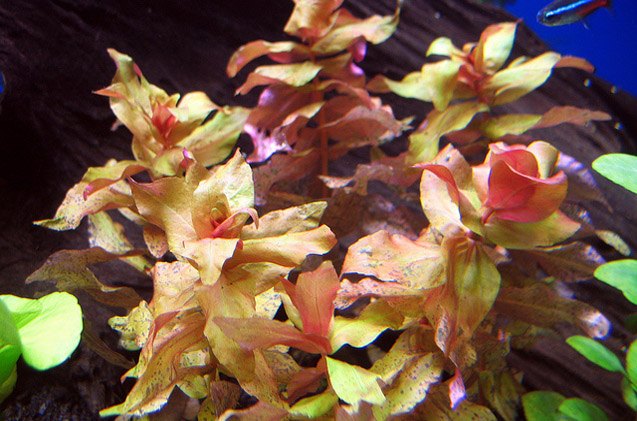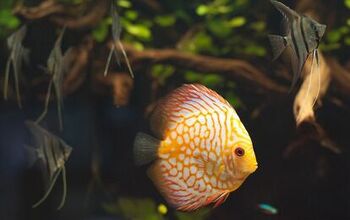What Are the Most Difficult Aquatic Plants to Grow?

For many aquarium hobbyists, cultivating a lushly planted tank is an exciting challenge. In order to keep your plants thriving you need to maintain a delicate balance of lighting and nutrients, not to mention high water quality. Fortunately, many aquarium plants are hardy and tolerant of changing water conditions – this makes the task of the aquarium hobbyist much easier. There are, however, a number of live plants which are difficult to cultivate.
Related: Top 3 Substrates to Use in Planted Aquariums
Types of Challenging Aquarium Plants
Many of the most popular species of aquarium plants – like Amazon Sword and Anubias – are notoriously easy to care for because they adapt well to different lighting levels and water conditions. If you are really looking for a challenge, consider some of the plants below:
- Ammannia crassicaulis: This species is native to West Africa and it grows in a single stem that can reach 3 to 5 inches long. When kept in high lighting, this plant can grow very quickly and it works as a submersed plant as well as an emersed plant. This species products brown leaves and purple flowers in the summer.
- Blyxa alternifolia: This plant is unique from other aquatic species because it produces long, grass-like leaves. This species requires at least 2 watts of light per gallon and it needs fertilized substrate and supplemental CO2 in order to grow properly. This plant is a mid-ground plant and it can be propagated with cuttings as long as ideal tank temperatures are maintained.
Related: 7 Common Types of Algae Found in Freshwater Aquariums
- Cabomba furcate: While many species of Cabomba are hardy in the planted tank, this species is a little more difficult to cultivate. It requires very high lighting (at least 3 watts per gallon) and it needs fertilized substrate in order to thrive. This species produces pinkish foliage with bright red to purpose flowers forming in the summer. This species can be propagated using the topping method.
- Cuphea anagolloidea: This species is a recent addition to the aquarium hobby and it is unique because most Cuphea species are terrestrial plants. This plant produces shoots that only grow about 2cm wide but they have a striking red color on the upper side of the leaves. This species requires very high lighting conditions and it is sensitive to poor water quality.
- Eleocharis fluctuans: This plant is native to Central and South America and it grows as a floating mass of reddish brown stems with thin green leaves. This species requires very high lighting and good fertilization – supplemental CO2 will also be highly beneficial. This plant requires soft, acidic water with a KH below 3 and a pH below 6.5.
- Ludwigia senegalensis: This species of aquatic plant is a new addition to the aquarium hobby and it is very interesting. Not only does this plant produced patterned leaves, but it grows in a single stem as well. This plant requires very high lighting and it requires supplementation with micronutrients to maintain growth. This species needs high iron levels as well as abundant nitrate and phosphate – good water flow and soft water will also be beneficial.
- Rotala macrandra: This aquatic plant produces bright red leaves that grow on a single stem up to 3 inches tall. This species is easy to obtain in the aquarium hobby but it is challenging to keep because it requires very high lighting. This species is also highly sensitive to poor conditions in the tank, requiring supplemental CO2 and nitrate and phosphate fertilizer.
With such a wide variety of aquatic plants to choose from, the aquarium hobbyist has the ability to customize his planted tank using any combination of variables. If you are looking for a little bit of extra challenge, consider some of the difficult aquarium plant species we suggested above.

Kate Barrington is the loving owner of two cats (Bagel and Munchkin) and a noisy herd of guinea pigs. Having grown up with golden retrievers, Kate has a great deal of experience with dogs but labels herself a lover of all pets. Having received a Bachelor's degree in English, Kate has combined her love for pets and her passion for writing to create her own freelance writing business, specializing in the pet niche.
More by Kate Barrington























